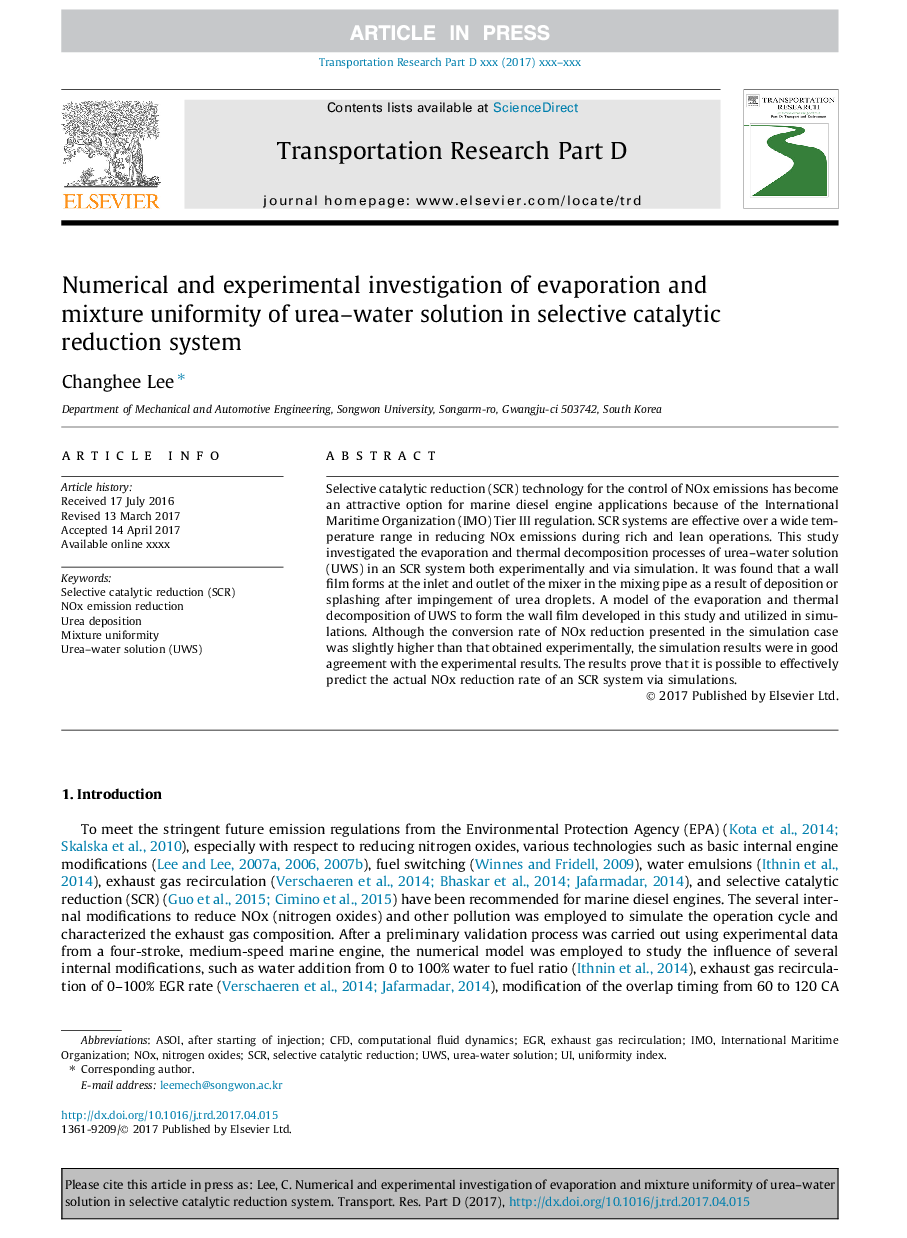| Article ID | Journal | Published Year | Pages | File Type |
|---|---|---|---|---|
| 7499030 | Transportation Research Part D: Transport and Environment | 2018 | 15 Pages |
Abstract
Selective catalytic reduction (SCR) technology for the control of NOx emissions has become an attractive option for marine diesel engine applications because of the International Maritime Organization (IMO) Tier III regulation. SCR systems are effective over a wide temperature range in reducing NOx emissions during rich and lean operations. This study investigated the evaporation and thermal decomposition processes of urea-water solution (UWS) in an SCR system both experimentally and via simulation. It was found that a wall film forms at the inlet and outlet of the mixer in the mixing pipe as a result of deposition or splashing after impingement of urea droplets. A model of the evaporation and thermal decomposition of UWS to form the wall film developed in this study and utilized in simulations. Although the conversion rate of NOx reduction presented in the simulation case was slightly higher than that obtained experimentally, the simulation results were in good agreement with the experimental results. The results prove that it is possible to effectively predict the actual NOx reduction rate of an SCR system via simulations.
Keywords
Related Topics
Life Sciences
Environmental Science
Environmental Science (General)
Authors
Changhee Lee,
